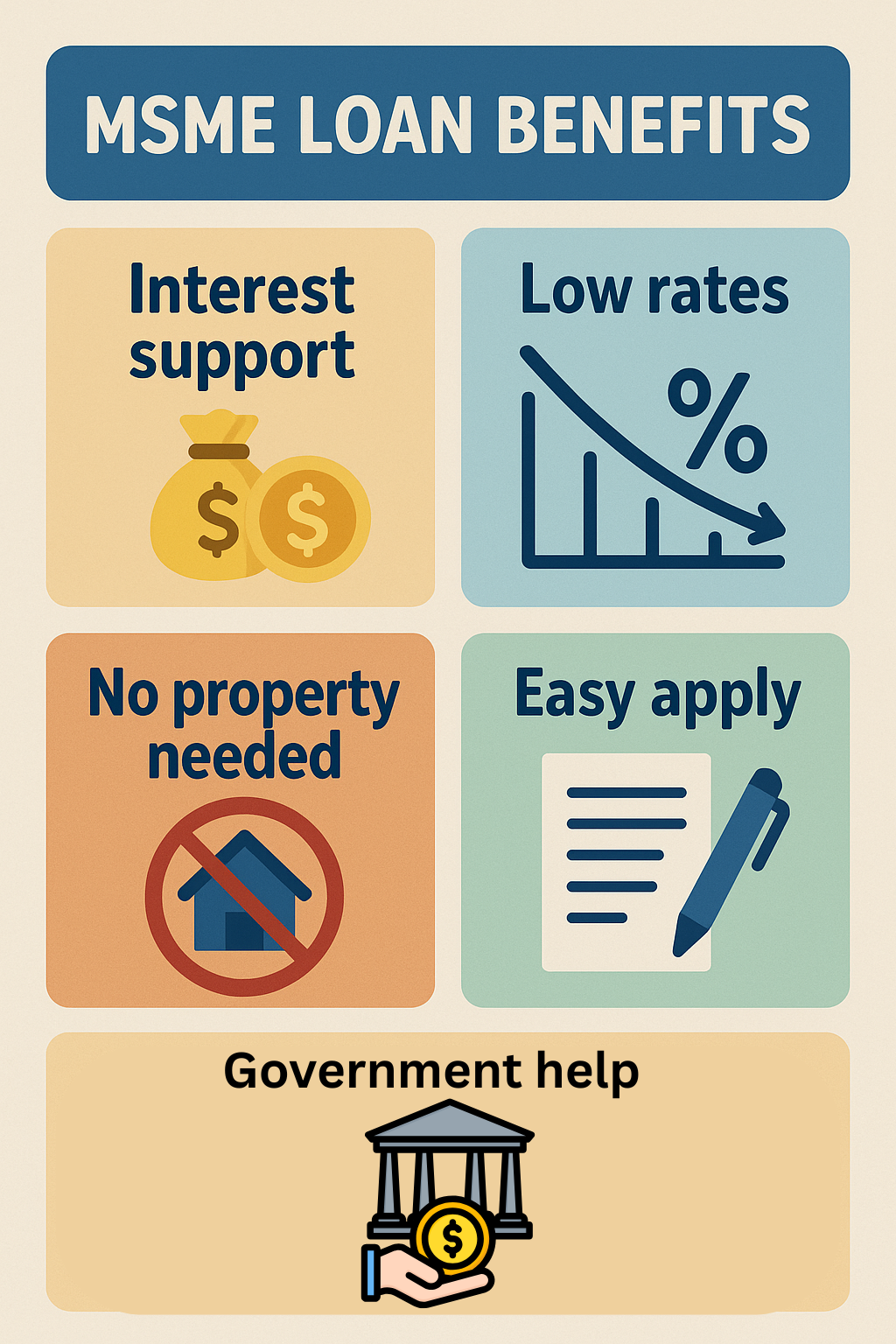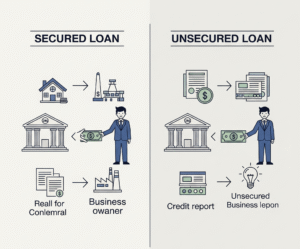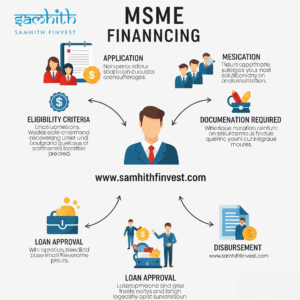
SME Business Loan: A Comprehensive Guide for Small Enterprises
Introduction to SME Business Loan
Small and Medium Enterprises (SMEs) are the backbone of the Indian economy. To support their growth, financial institutions offer SME business loans, which provide the capital needed for expansion, equipment purchase, inventory, and working capital requirements.
Small and medium-sized enterprises (SMEs) will make up nearly 30% of India’s GDP by 2025, making SMEs loans in India an essential part of economic growth. This blog explores how these loans work, their benefits, application process, and current trends like the sme finance forum 2025.
Understanding SME Business Loans
What is an SME Business Loan?
An SME business loan is a type of financing specially designed to meet the requirements of small and medium enterprises. The majority of these loans are unsecured, offer quick disbursement, require little documentation, and have a variety of repayment options.
Who Can Apply?
Any business falling under the MSME classification as defined by the Indian government can apply. These include manufacturers, traders, retailers, and service providers.
Benefits of SME Business Loans
Easy Accessibility
Accessing a small business loan is now easier and faster thanks to the proliferation of NBFCs and digital banking.
Unsecured Options
The absence of collateral on the majority of small business loans in India lowers the risk for entrepreneurs.
Competitive Interest Rates
Thanks to government-backed programs, banks and NBFCs now offer lower interest rates.
Flexible Repayment Tenure
Depending on the loan amount and financial profile, tenures can range from 12 months to 5 years.
Types of SME Loans Available in India
Working Capital Loans
These are short-term loans meant to cover operational expenses like salaries and rent.
Machinery Loans
used to acquire or upgrade machinery that aids in productivity enhancement.
Term Loans
These are long-term sme business loans for major capital expenditures.
Line of Credit
A revolving credit facility to meet continuous funding needs.
Government Schemes Supporting SME Finance
CGTMSE (Credit Guarantee Fund Trust for Micro and Small Enterprises)
This scheme offers credit guarantees to financial institutions that provide loans to SMEs.
Mudra Loans
Part of the Pradhan Mantri Mudra Yojana (PMMY), this loan is ideal for micro-enterprises.
Stand-Up India
Promotes entrepreneurship among women and SC/ST communities with special sme business loan provisions.
SME Finance Forum 2025: What to Expect
Overview of SME Finance Forum 2025
A global platform devoted to inclusive financing strategies for SMEs is the sme finance forum 2025. To close the gap in small business finance, it brings together regulators, fintechs, and financial institutions.
Key Discussions
Digital transformation, AI-driven credit evaluation, and collaborative finance models are emphasized at the 2025 forum.
India’s Role
India’s participation is crucial in this year’s forum, with discussions on improving sme loans in india through tech-based underwriting.
The SME Finance Gap: A Real Challenge
Understanding the SME Finance Gap
The sme finance gap refers to the unmet demand for capital among SMEs. Many small businesses, despite their potential, are unable to obtain credit because they lack collateral, have poor credit histories, or operate in an informal manner.
Global and Indian Statistics
The SME finance gap is estimated to be $5.2 trillion worldwide. In India, it is around ₹25 lakh crore, highlighting the urgency for policy and banking reforms.
Addressing the Gap
The focus of many NBFCs and digital lenders is to bridge this gap by offering innovative, low-documentation loans.
How to Apply for an SME Business Loan
SME Finance Login and Application Steps
The majority of NBFCs and banks have made use of digital portals like the sme finance login systems to streamline the application process.
Step-by-Step Guide
Visit the Lender’s Website
Use the sme finance login page to begin your application.
Fill Application Form
Provide business details, turnover, and loan requirements.
Upload Documents
Submit KYC, ITRs, bank statements, and business proof.
Verification & Approval
If eligible, the loan is approved within 48–72 hours.
Documents Required for SME Loans in India
Standard Documentation
KYC Documents
Aadhar, PAN, and GST certificate
Financial Statements
Bank statements for the last 6 months and ITRs for the past 2 years
Business Proof
Udyam Registration or Trade License
Eligibility Criteria for SME Business Loans
Business Age and Turnover
Minimum of 2 years in operation and annual turnover of ₹10 lakh or more.
Credit Score
Typically, a CIBIL score of 650 or higher is required.
Business Registration
The company should be a registered MSME under Indian laws.
Top Banks and NBFCs Offering SME Loans in India
Leading Institutions
HDFC Bank
Offers up to ₹50 lakh with fast digital approval.
ICICI Bank
Provides overdraft and working capital loans under its SME lending schemes.
SIDBI (Small Industries Development Bank of India)
Specializes in sme business loan and refinancing.
Bajaj Finserv
Popular NBFC known for quick disbursal and minimal documentation.
Tips for Getting Your SME Loan Approved
Maintain Accurate Records
Ensure your books of accounts are up to date.
Improve Your Credit Score
Pay off existing debts to boost your CIBIL score.
Have a Clear Business Plan
Banks prefer borrowers who demonstrate a strong repayment capacity and growth roadmap.
Technology and SME Financing
Role of Fintech in SME Lending
Digital lenders are using AI, blockchain, and big data to simplify credit evaluation.
Advantages of Fintech
Real-Time Loan Approval
Personalized Offers Based on Business Behavior
Instant Disbursals to Bank Accounts
Common Mistakes to Avoid When Applying
Not Checking Eligibility
Always ensure your business meets the lender’s requirements.
Ignoring the Fine Print
Understand prepayment charges, processing fees, and penalties.
Applying with Incomplete Documents
This can lead to unnecessary delays or rejection.
Future of SME Financing in India
What Lies Ahead?
With initiatives like ONDC and digital India, sme loans in india will see massive transformation through integration and digitization.
Digital Credit Ecosystems
Collaborations between fintechs and banks will ensure better access and lower costs.
Increased Regulatory Support
The government is expected to introduce more schemes post the sme finance forum 2025 discussions.
Conclusion: Empowering SMEs Through Loans
An SME business loan is more than just financial support; it’s a growth enabler. With the rising popularity of platforms like the sme finance forum 2025, and digital tools like sme finance login, SMEs are better placed to bridge the sme finance gap and realize their full potential.
Understanding and utilizing sme loans in India can put you on the fast track to success, whether you are a new business owner or an established one.













Post Comment